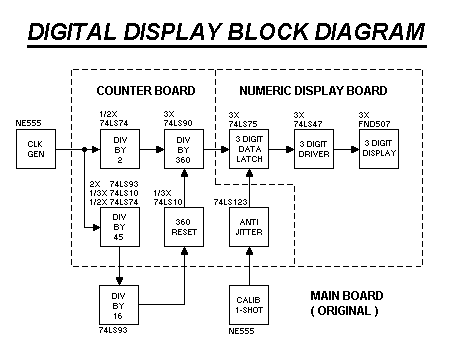
I found it to be particularly useful for spotting "trends" ( CW or CCW bearing rotation ) because the original display will only reveal bearing steps of 22.5 degrees, ( 1/16 of 360 degrees ) and there isn't very much "bearing overlap" in the original display. ( signal bearings where two adjacent LEDs are illuminated )
It is very unlikely that the accuracy of this D/F can truly justify 3 digits of resolution at all points of the dial. The size of the errors are anyone’s guess... I would guess 3 to 6 degrees of error, under perfect/ideal conditions. In any event, the virtues of a digital readout for mobile T - hunting are dubious... a pelorus - type display is far better, but someone might want to use this D/F in another context, although ( as indicated above ) I did find it useful for spotting "trends". Anyway, it was easy to do, so here it is. Incidentally, this readout accessory can probably be adapted to other types of Doppler D/F’s, with a few cuts and jumpers.
GENERAL PROFILE
As with the original D/F, the parts used are very common, and shouldn’t be too difficult to find. The display digits are common anode types. The part number on the schematic is FND507, which is an obsolete Fairchild p/n, but similar readouts are available from other manufacturers which have the same footprint and pinout. ( see the parts list )

These PC boards have the same footprint as the original boards, so they will
fit in the same enclosure as the original D/F. The original pelorus display can
( if desired ) remain installed and will continue to operate, but there isn’t
enough room in the SerPac enclosures to mount both of them. ( unless they are
mounted on opposite sides of the same box ) In any event, the boards will have
to be "stacked" inside the box, so some standoffs will be required.